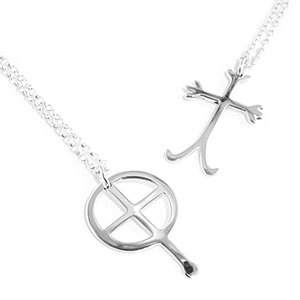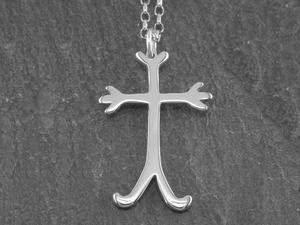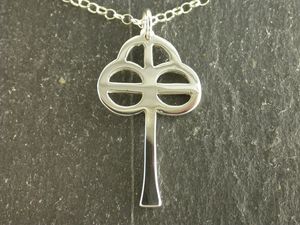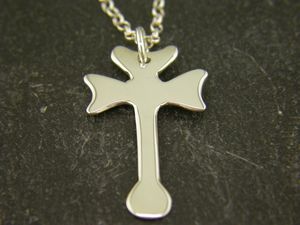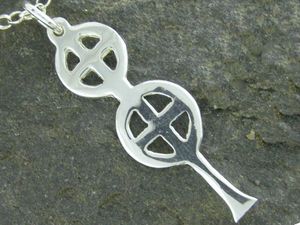Crosses of Wales for Easter
Easter is an important time in the Christian faith, so this week we are featuring Croesau Cymru (Crosses of Wales), a series of silver pendants based on the very earliest carved stone crosses found in Wales. These date from the 6th century or earlier, when small Celtic Church settlements were numerous in Western Britain (Wales, Scotland, Cornwall), but large parts of Saxon Britain were still not Christianised.
Church settlements began as small groups of monastic cells within a circular enclosure, sometimes taking over an earlier pre-Christian site. Many of these circular walled enclosures have survived as sites of Christian worship until today, now enclosing ancient cemeteries and stone churches. The villages and towns that grew around them have names beginning with “Llan”. The word “llan” means church, and the following part is often the name of the saint who founded the original church, e.g. Llanddewi (St. David), Llanbadarn (St. Padarn).
Within the enclosure sacred stones stood as focal points of worship (in some cases these may already have been “sacred” stones of an earlier faith). In order to “Chritianise” them crude cross shapes were carved deeply into the rough stone. They have been venerated as sacred stones ever since, and many of them have now been taken inside the present stone churches for protection; others have been removed for safe keeping in the National Museum of Wales.
The variety of cross shapes is fascinating, styles varying from one site to another, but tending to have similar styles on the one site. Some are the traditional Celtic ring cross, others fairly plain linear crosses and some based on the “Chi Rho” Greek symbol of Christ.
